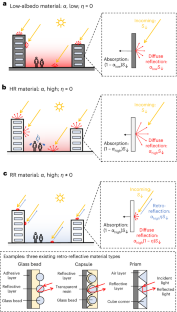2024-04-04 パシフィック・ノースウェスト国立研究所(PNNL)
<関連情報>
- https://www.pnnl.gov/publications/new-workflow-adapts-life-cycle-analysis-circular-homes
- https://iopscience.iop.org/article/10.1088/2634-4505/ad17ce
建物全体のLCAを低炭素設計プロセスにつなげる戦略 Strategies for connecting whole-building LCA to the low-carbon design process
Kieren H McCord, Heather E Dillon, Patricia Gunderson, Sadie Carlson, Adam R Phillips, Darrin Griechen and Chrissi A Antonopoulos
Environmental Research: Infrastructure and Sustainability Published: 5 January 2024
DOI:10.1088/2634-4505/ad17ce

Abstract
Decarbonization is essential to meeting urgent climate goals. With the building sector in the United States accounting for 35% of total U.S. carbon emissions, reducing environmental impacts within the built environment is critical. Whole-building life cycle analysis (WBLCA) quantifies the impacts of a building throughout its life cycle. Despite being a powerful tool, WBLCA is not standard practice in the integrated design process. When WBLCA is used, it is typically either speculative and based on early design information or conducted only after design completion as an accounting measure, with virtually no opportunity to impact the actual design. This work proposes a workflow for fully incorporating WBLCA into the building design process in an iterative, recursive manner, where design decisions impact the WBLCA, which in turn informs future design decisions. We use the example of a negative-operational carbon modular building seeking negative upfront embodied carbon using bio-based materials for carbon sequestration as a case study for demonstrating the utility of the framework. Key contributions of this work include a framework of computational processes for conducting iterative WBLCA, using a combination of an existing building WBLCA tool (Tally) within the building information modeling superstructure (Revit) and a custom script (in R) for materials, life cycle stages, and workflows not available in the WBLCA tool. Additionally, we provide strategies for harmonizing the environmental impacts of novel materials or processes from various life cycle inventory sources with materials or processes in existing building WBLCA tool repositories. These strategies are useful for those involved in building design with an interest in reducing their environmental impact. For example, this framework would be useful for researchers who are conducting WBLCAs on projects that include new or unusual materials and for design teams who want to integrate WBLCA more fully into their design process in order to ensure the building materials are consciously chosen to advance climate goals, while still ensuring best performance by traditional measures.


